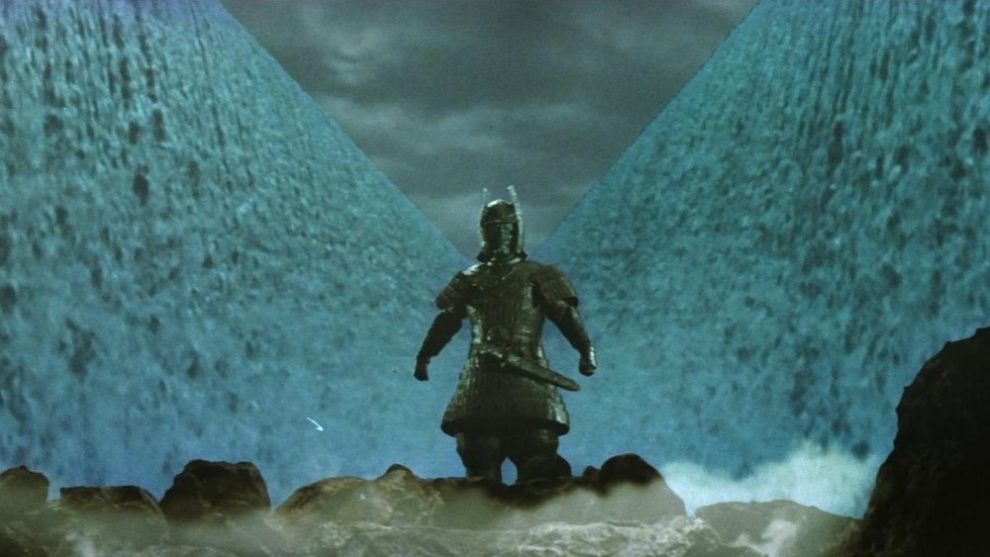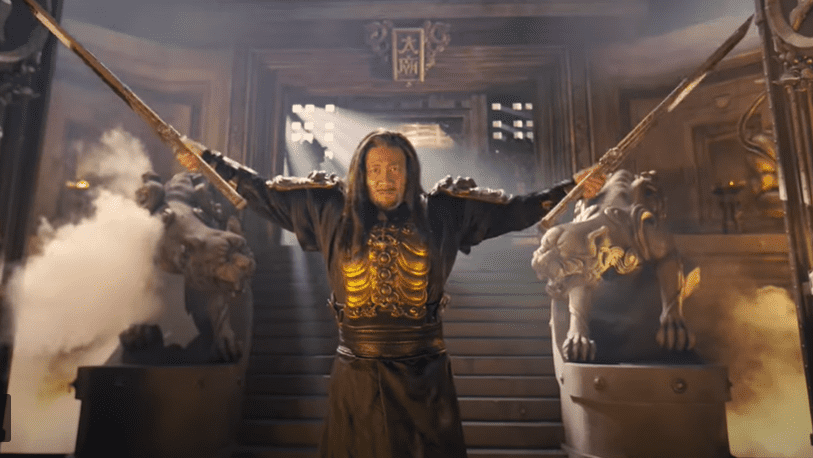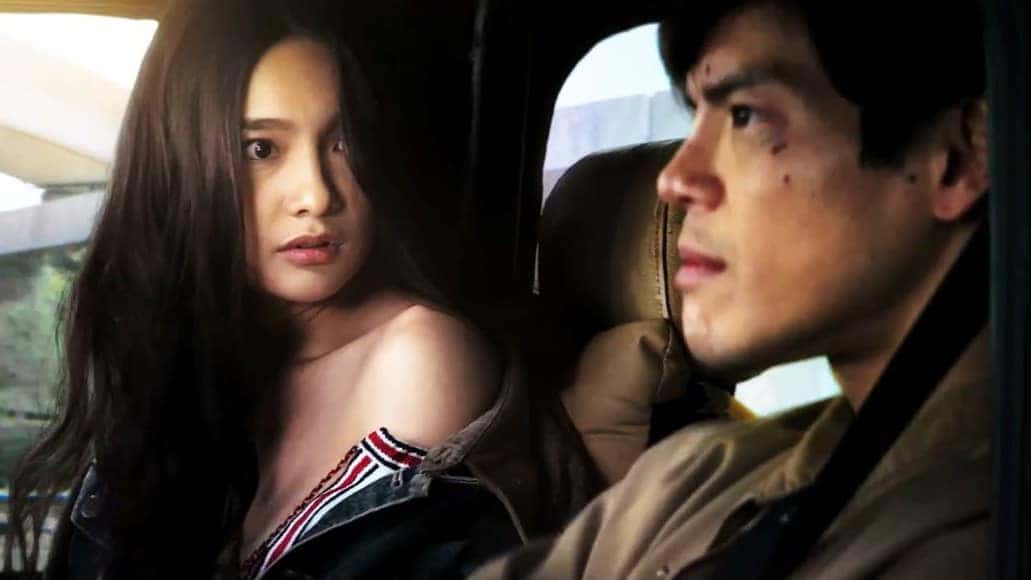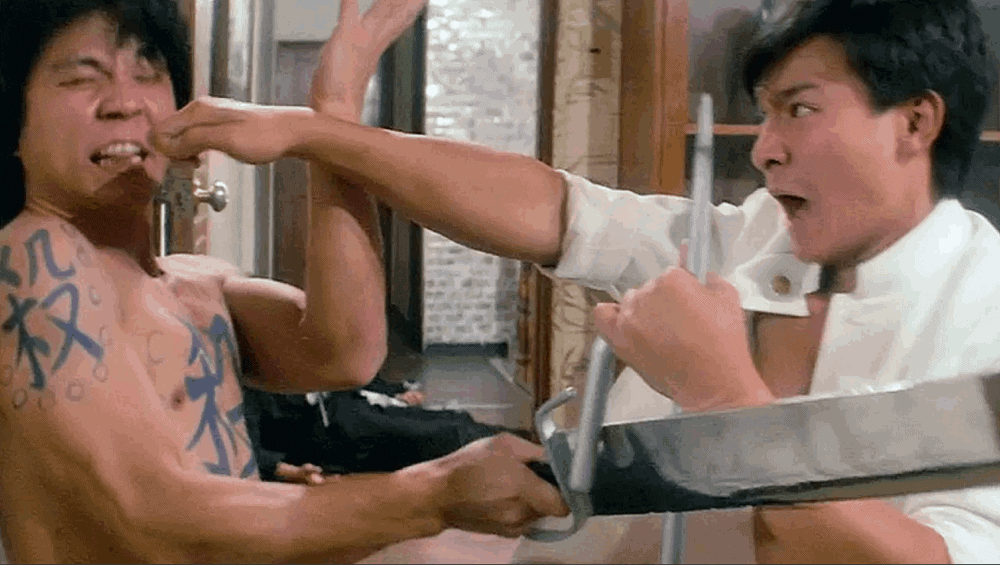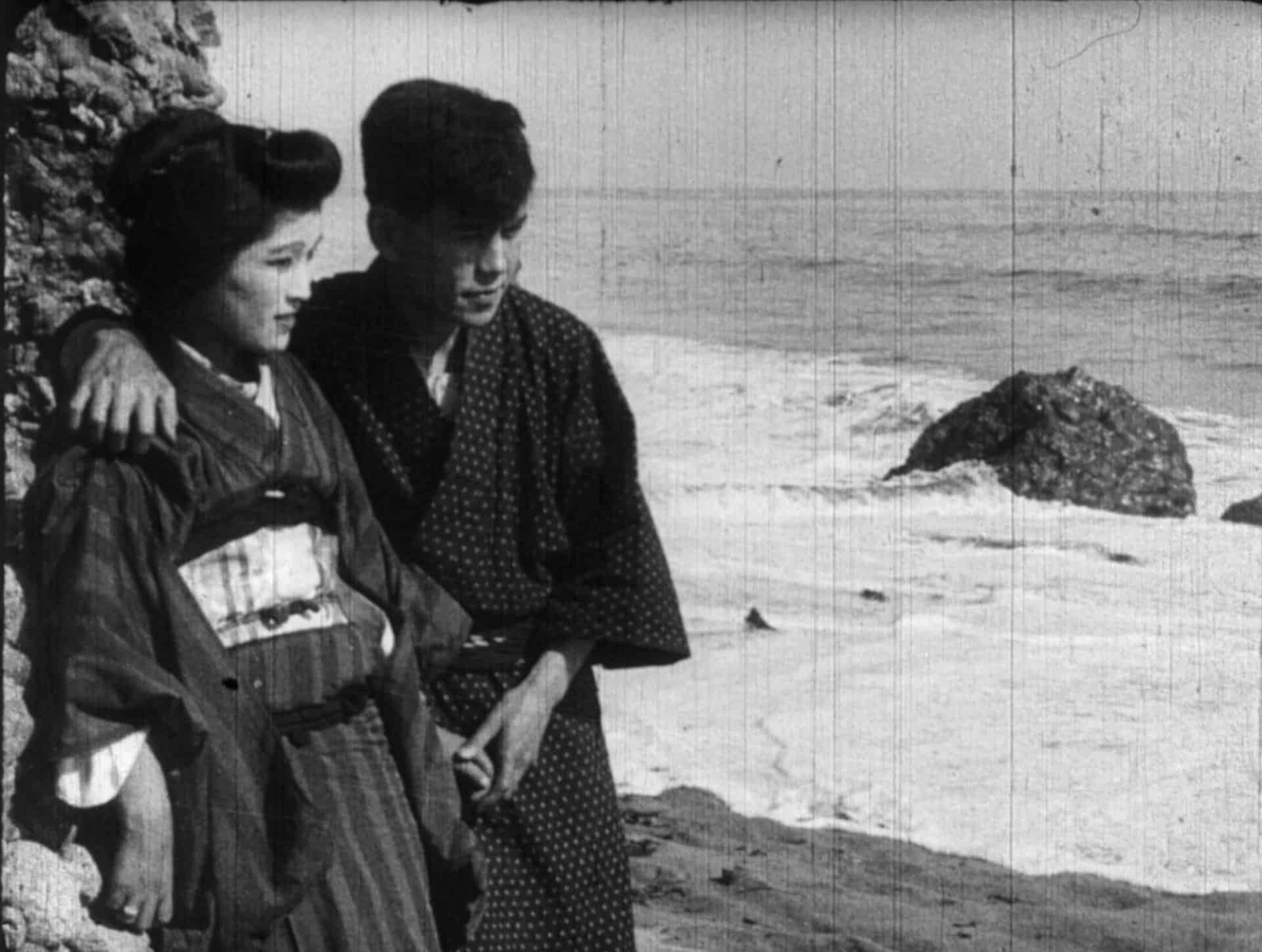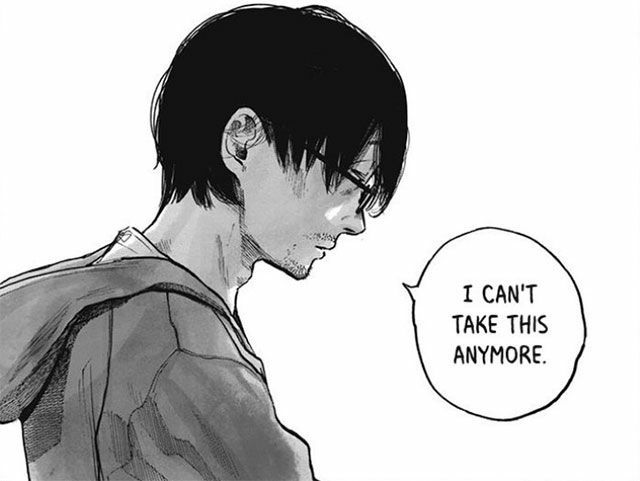After the sprawling success of the first film, Daiei Studios returned to the fabled stone warrior Daimajin for a second round of feudal-set tokusatsu action. Bringing even more storyline elements from the Jewish fable of the Golem into the picture than the first film, jidaigeki master Kenji Misumi manages to produce a no less entertaining but far less impactful retelling, in a different location in this second entry in the trilogy, available in a Blu-Ray collection from Arrow Video.
After conquering a village, evil warlord Danjo (Takashi Kanda) sets his sights on another one by the lakeside. He kidnaps village local Katsushige Nakoshi (Koichi Uenoyama) and offers an ultimatum to the villagers to hand over one of their protectors, Lord Juro (Kojiro Hongo), in exchange for the release of Katsushige. However, Lord Juro, his sister Sayuri (Shiho Fujimura and the brave people of the village defy the evildoers and decide to fight for their freedom and their homeland themselves. When their sacrifices seem in vain, they pray to their stone god to awaken and fight for them.

Taken on its own accord, “Return of Daimajin” is a highly enjoyable genre effort. As expected in this series, the early work here is all about the plight of the villagers and the oppression they face, which makes the eventual awakening of the statue all the more cathartic. With Danjo taking over the castle at the beginning of the film and imposing his will on the subjects in the various villages under his control, subjecting them to harsh working conditions without respite and scoffing at their way of life, the need for the guardian to awaken is effectively realized. Despite the unrealistic nature of their behavior in doing so, since the end result of Danjo occupying the village is never given, the villainy he and his men project is utilized to the point that it's a sense of joy that the creature awakens and sets off on his rampage. The juxtaposition of their friendly lifestyle and existence against the treatment after the takeover is where this all comes together.
As well, much like the first film, “Return” contains a lot of fun with the action and kaiju sequences. The sword-play feature in the initial takeover of the castle is a rousing start to the fight, featuring the performers wielding their weapons in a large-scale battle that's frenetic and takes place across the castle. Featuring the need to get Katsushige to safety against Danjo's troops and the numerous close-calls that take place, it's got a lot to like overall. The later sword-fighting at the botched kidnapping sequence in the castle that forces Juro to battle the guards after initially taking Danjo hostage is just as much fun, and the preparations for the final confrontation are just as over-the-top. The finale, with Majin in action laying waste to anything and everything around him is spectacular, with the widespread destruction and chaos creating tons of disaster. The collapsing buildings and walls are fantastic looking and display a real sense of spectacle that carries just as much euphoria, with the end-game also being the destruction of Danjo's forces and allowing the villagers to return to the village to live in peace, making for a winning scene altogether.
However, there's still little escaping the fact that “Return” feels like it's retreading the same ground as its predecessor. Writer Tetsuro Yoshida seems to recycle much of the second act from the first film for this new entry, featuring a tyrannical lord wielding barbaric practices and cruelty amongst the villagers who were once living a life of peace and prosperity. After dealing with the torture for as long as they can, the villagers head out to awaken the giant stone statue which metes out justice in a glorious spectacle. That plays out generally the same as before, with Danjo playing the role instead of Samanosuke from part one and the location transposed to a lakeside community rather than the mountainous region of the original. It's a slight change at best, but the brief running time does make it stand out as being too much like the original in most respects.
Despite the drawbacks, “Return of Daimajin” has enough going for it that there's a lot of fun to be had, especially since the parts where it's supposed to shine are as top-tier quality as the original. Fans of the first or the genre, in general, are highly encouraged to investigate this one.


